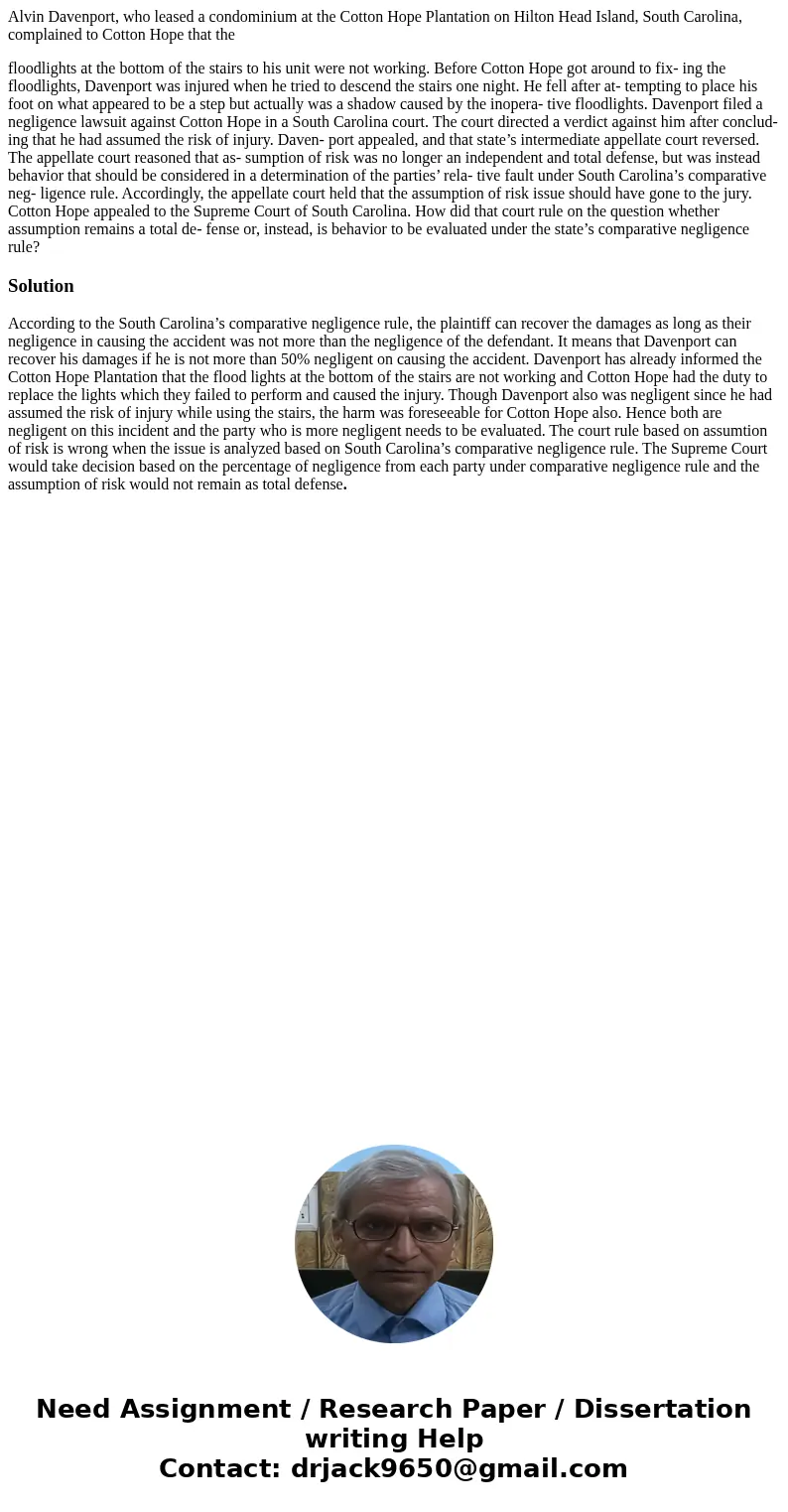Alvin Davenport who leased a condominium at the Cotton Hope
Alvin Davenport, who leased a condominium at the Cotton Hope Plantation on Hilton Head Island, South Carolina, complained to Cotton Hope that the
floodlights at the bottom of the stairs to his unit were not working. Before Cotton Hope got around to fix- ing the floodlights, Davenport was injured when he tried to descend the stairs one night. He fell after at- tempting to place his foot on what appeared to be a step but actually was a shadow caused by the inopera- tive floodlights. Davenport filed a negligence lawsuit against Cotton Hope in a South Carolina court. The court directed a verdict against him after conclud- ing that he had assumed the risk of injury. Daven- port appealed, and that state’s intermediate appellate court reversed. The appellate court reasoned that as- sumption of risk was no longer an independent and total defense, but was instead behavior that should be considered in a determination of the parties’ rela- tive fault under South Carolina’s comparative neg- ligence rule. Accordingly, the appellate court held that the assumption of risk issue should have gone to the jury. Cotton Hope appealed to the Supreme Court of South Carolina. How did that court rule on the question whether assumption remains a total de- fense or, instead, is behavior to be evaluated under the state’s comparative negligence rule?
Solution
According to the South Carolina’s comparative negligence rule, the plaintiff can recover the damages as long as their negligence in causing the accident was not more than the negligence of the defendant. It means that Davenport can recover his damages if he is not more than 50% negligent on causing the accident. Davenport has already informed the Cotton Hope Plantation that the flood lights at the bottom of the stairs are not working and Cotton Hope had the duty to replace the lights which they failed to perform and caused the injury. Though Davenport also was negligent since he had assumed the risk of injury while using the stairs, the harm was foreseeable for Cotton Hope also. Hence both are negligent on this incident and the party who is more negligent needs to be evaluated. The court rule based on assumtion of risk is wrong when the issue is analyzed based on South Carolina’s comparative negligence rule. The Supreme Court would take decision based on the percentage of negligence from each party under comparative negligence rule and the assumption of risk would not remain as total defense.

 Homework Sourse
Homework Sourse